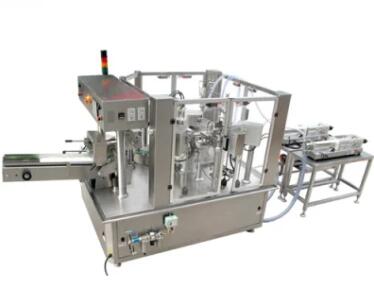The Balance Sheet of Efficiency: Analyzing the Cost and Savings of Packing Machinery
2023-11-10
Introduction:
In the dynamic landscape of modern manufacturing and packaging, businesses are constantly seeking ways to enhance efficiency and reduce labor costs. Investing in packing machinery can be a strategic move, offering the promise of increased productivity and potential savings. This blog aims to explore the relationship between the upfront cost of packing machinery and the long-term savings it can generate in terms of efficiency and reduced labor expenses.
Section 1: Upfront Costs vs. Long-Term Savings
When considering the adoption of packing machinery, businesses often grapple with the upfront costs involved. It's crucial to view this initial investment as a strategic decision that can yield significant long-term benefits. While the price tag may seem substantial at first, the efficiency gains and labor savings over time can tip the scales in favor of machinery adoption.
Section 2: Increased Efficiency and Throughput
Packing machinery is designed with precision and speed in mind, capable of handling tasks that might be labor-intensive and time-consuming when done manually. Automated processes can significantly increase production throughput, allowing businesses to meet higher demand and fulfill orders more efficiently. The acceleration of production can directly contribute to increased revenue and improved overall operational efficiency.
Section 3: Labor Savings and Workforce Optimization
One of the primary advantages of packing machinery is the potential for substantial labor savings. Automated systems can perform tasks tirelessly and consistently, eliminating the need for manual labor in repetitive and physically demanding activities. This not only reduces labor costs but also allows human resources to be redirected to more complex and value-added tasks, contributing to a more optimized and skilled workforce.
Section 4: Precision and Quality Assurance
Packing machinery is engineered to provide a high level of precision in packaging processes. This accuracy not only ensures consistent product quality but also minimizes the risk of errors and waste. By reducing errors in packaging, businesses can avoid the costs associated with rework, returns, and product recalls, contributing to overall cost savings and customer satisfaction.
Section 5: Adaptability and Scalability
Investing in packing machinery with adaptable features allows businesses to scale their operations efficiently. As production demands fluctuate, automated systems can be adjusted or expanded to accommodate increased volume without the proportional increase in labor costs. This scalability provides businesses with the flexibility to respond to market dynamics and seize growth opportunities.
Section 6: Maintenance and Total Cost of Ownership (TCO)
While upfront costs are a consideration, it's essential to factor in the ongoing maintenance expenses and the total cost of ownership (TCO) over the lifespan of the packing machinery. Regular maintenance can extend the equipment's life and ensure consistent performance, contributing to the overall cost-effectiveness of the investment.
Conclusion:
In the balance between the cost of packing machinery and the savings it offers in terms of efficiency and labor, businesses must adopt a holistic perspective. The upfront investment, when aligned with the long-term gains in productivity, labor optimization, and reduced operational costs, positions packing machinery as a strategic asset. By embracing automation, businesses not only enhance their competitiveness but also pave the way for sustainable growth in a rapidly evolving market. The equation of cost versus savings ultimately tilts in favor of those who recognize the transformative power of packing machinery in shaping the future of manufacturing and packaging industries.



